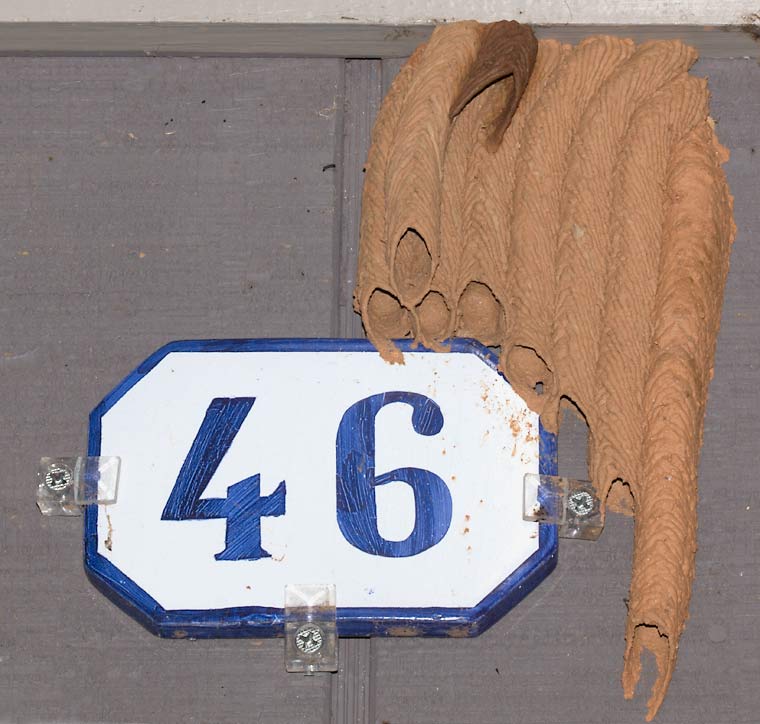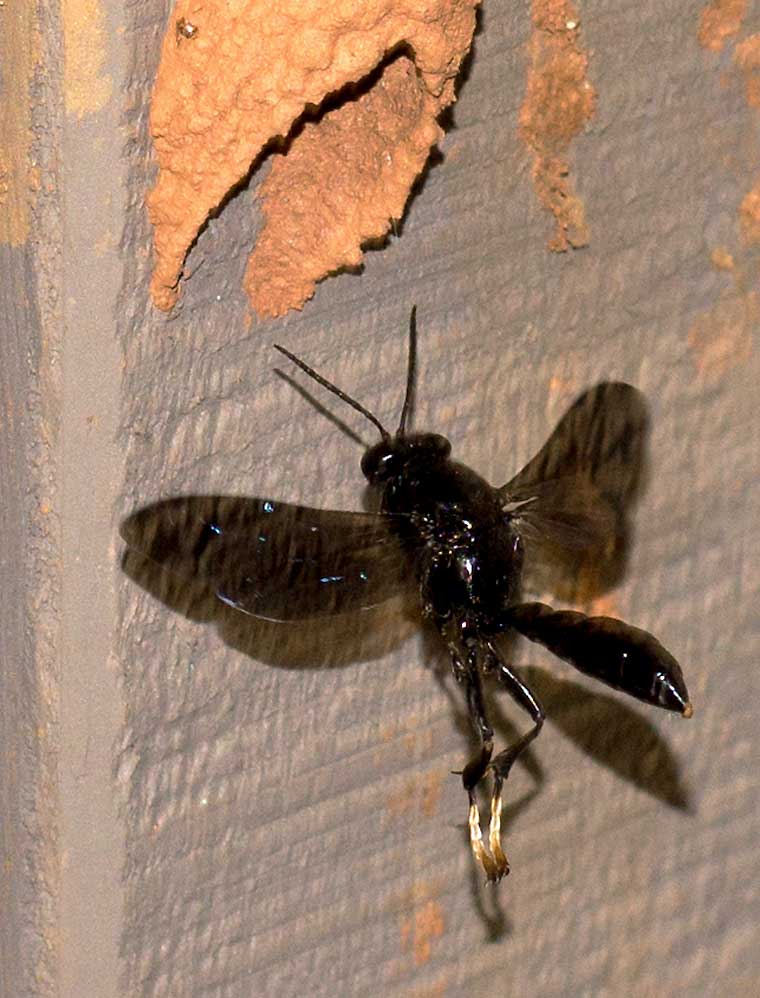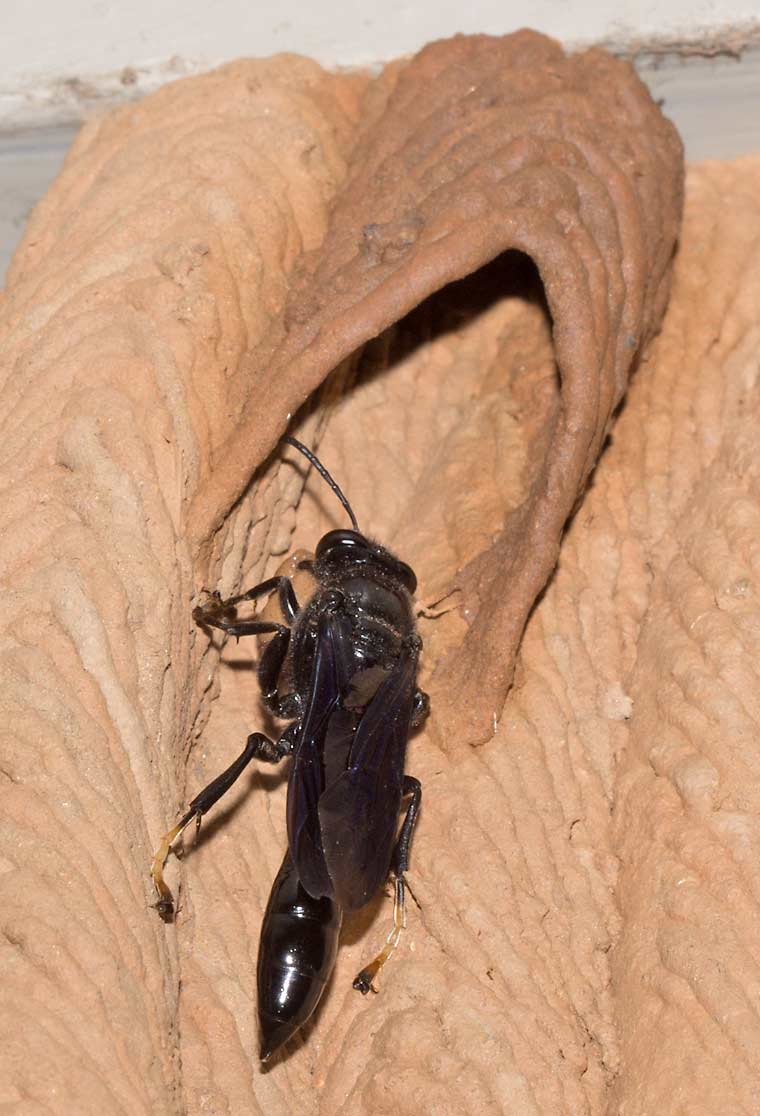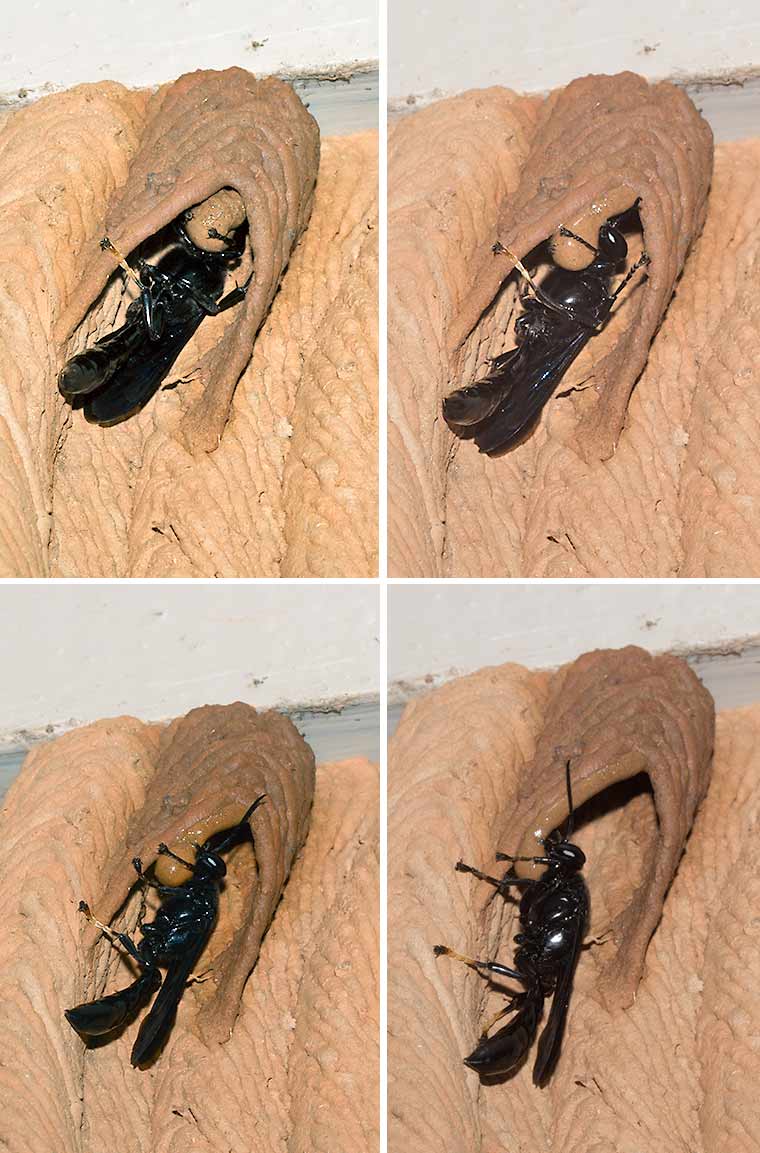You may be favored, as we have been, by an architectural and engineering marvel right outside your front door. We have a small front porch with wood siding. Every year Organ Pipe Mud Wasps (Trypoxylon politum) build nests in the shelter we have provided. This one is right above the house number directly above the front door.
It is easy to see how “organ pipe” came to be used as part of the common name of these wasps, because the nests do resemble organ pipes (except they are open on the wrong end!), This nest has 8 completed pipes. The darker colored mud at the top is a new pipe under construction.
Organ Pipe Mud Wasps are large, and glossy black with white lower sections (tarsi) on their rear pair of legs. When we were growing up in Indiana, we called these insects “mud daubers”. Here in the South they are often referred to as”dirt daubers” or “blue devils”.
Whatever you call them, they are handsome wasps that are unaggressive. They can sting, but will only do so if under extreme circumstances. You can stand right up next to the nests and watch them closely. They buzz loudly as they fly in, but will not bother you.
Organ Pipe Mud Wasps are very diligent in the construction of their nest. This photograph shows a wasp arriving with a ball of mud to be added to the nest. The wasp has to find a spot where the mud has the right consistency for nest construction. Then it collects a mud ball and flies back to the nest under construction. The nest is seen to be made up of strips of mud, in this case 9 or 10 strips have been added so far.
The wasps construct the nest in stages. Each mud ball is attached at the top center of the nest, then smoothed out to the proper shape as the wasp backs away from the top center. It thus takes two mud balls to make one strip across the nest. In this case, about 20 mud balls have been added to complete the 10 visible strips. I counted at least 54 mud strips in the longest “pipe” of the nest pictured at the top of this post. This means that at least 108 flights with a mud ball were necessary for its construction.




